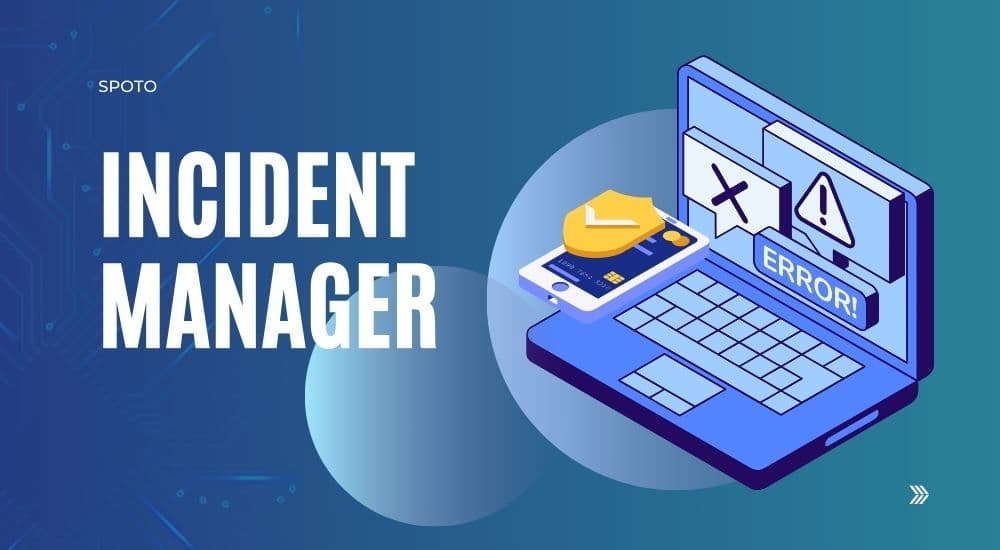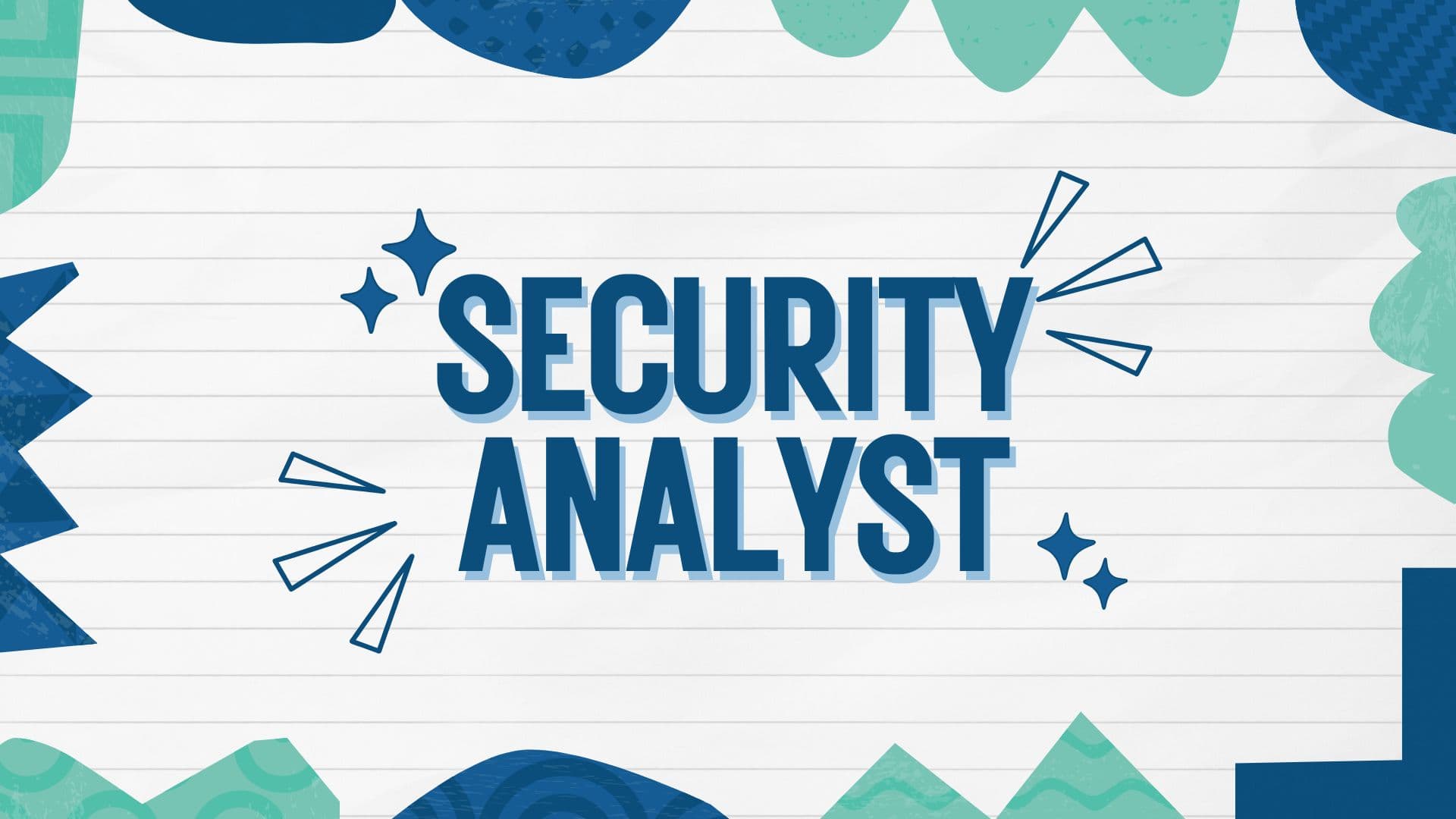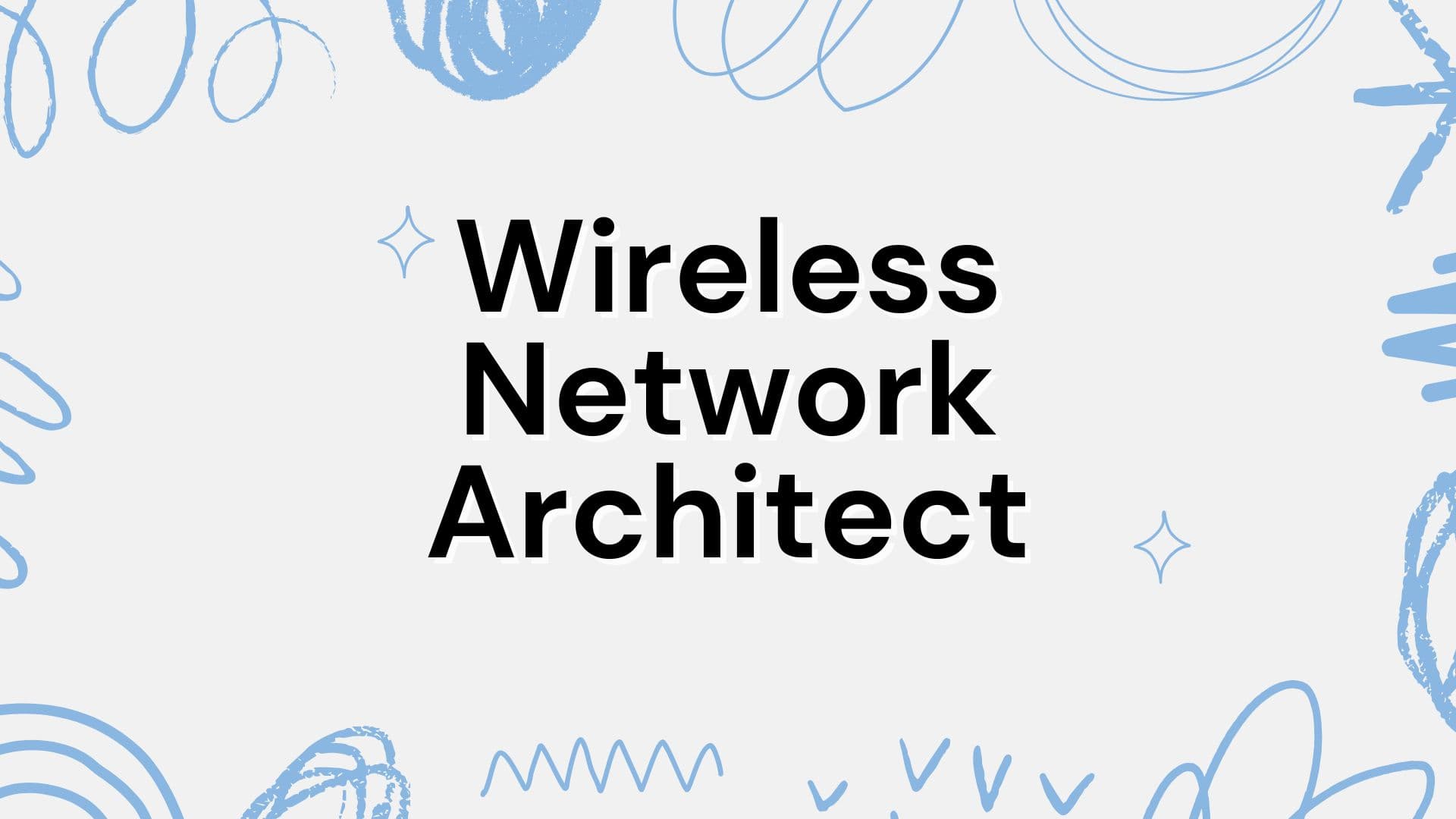TRUSTED BY THE SMARTEST TEAMS IN THE WORLD FOR CERTIFIED CANDIDATES
SPOTO Blogs
Useful learning materials to become certified IT personnel
-
- 634
- SPOTO
- 2025-05-06 11:50
-
- 640
- SPOTO
- 2025-05-02 21:55
-
- 786
- SPOTO
- 2025-05-02 21:44
-
- 718
- SPOTO
- 2025-04-29 13:28
-
- 716
- SPOTO
- 2025-04-27 16:19
-
- 883
- SPOTO
- 2025-04-27 14:24
-
- 598
- SPOTO
- 2025-04-25 18:14
-
- 344
- SPOTO
- 2025-04-25 17:30
-
- 926
- SPOTO
- 2025-04-23 10:43
TRUSTED BY THE SMARTEST TEAMS IN THE WORLD FOR CERTIFIED CANDIDATES
SPOTO Blogs
Useful learning materials to become certified IT personnel
-
- 634
- SPOTO
- 2025-05-06 11:50
Table of Contents1. What is a Cloud Engineer?2. Cloud Engineer responsibilities3. Career Insights: Salary, Outlook & Related Roles4. How to Become a Cloud Engineer? 1. What is a Cloud Engineer? Cloud technology allows companies to store and back up data more easily. Software updates can also be made on demand and customers are able to access their information using different devices. Cloud engineers are IT specialists who build and maintain cloud computing applications and infrastructure. You will be working behind the scenes as a cloud engineer to maintain these systems. Cloud engineers design and build IT infrastructures for businesses. They also establish cloud services to speed up and scale operations. 2. Cloud Engineer responsibilities The roles and responsibilities of a cloud engineer involve performing a variety of tasks on a daily basis. The responsibilities of a cloud engineer include, but are not limited to: assessing the security of an enterprise's network and the possible risks, uploading the enterprise's business information to the cloud computing platform and establishing a simple data retrieval mechanism, keeping abreast of the progress in the field of cloud computing, and providing the best cloud computing solutions for enterprises and customers, maintaining and storing the company's data information through cloud computing, working with network security and IT personnel to jointly solve problems related to cloud application failures or security vulnerabilities, creating and installing cloud computing solutions according to the requirements of customers or employers, automating specific system operations to improve efficiency and speed, developing, building and implementing cloud-based modular applications, regularly evaluating computer systems and providing performance enhancement recommendations, etc. 3. Career Insights: Salary, Outlook & Related Roles (1) Cloud Engineer Salary ZipRecruiter estimates that the average hourly wage of cloud engineers in the United States will be $62.89 on April 28, 2025. Hourly wages for cloud engineers can range anywhere from $87.26 to $23.56. However, most salaries are between $53.61 and $71.63 in the 25th percentile. Cloud engineers' average salaries can vary widely (up 18%). This means that there are many opportunities to advance and increase pay depending on the skill level, location and years of experience. (2) Job Outlook of Cloud Engineer Cloud computing has a bright future. According to the U.S. Bureau of Labor Statistics, cloud computing employment is expected to grow 15% between 2023 and 2033. This represents a faster-than-average growth in jobs. Each year, 356,700 additional job openings are predicted. This growth is driven by the increasing use of cloud services in businesses and the need for better ways to manage and analyze data. (3) Similar Occupations Cloud Architect DevOps Engineer DevOps Engineer Cloud Systems Engineer Cloud Consultant Software Engineer Systems Administrator Data Engineer Machine Learning Engineer Computer and Information Systems Manager Cloud Administrator 4. How to Become a Cloud Engineer? (1) Obtain a Bachelor's Degree The majority of positions require candidates to have a Bachelor's Degree or higher. A reputable university will give you an edge in the job market. The applicant should have a degree in a related field, such as cloud computing or information technology. (2) Develop professional skills Cloud engineers should have a deep understanding of Linux server architecture, maintenance and management, cloud database management capabilities, and master related technologies such as MySQL and Hadoop. At the same time, they should also have solid general programming skills and be familiar with mainstream programming languages ​​such as SQL, Java, Python, Ruby, Golang, PHP and .NET. In addition, cloud engineers also need to understand virtual networks and general network management functions, be proficient in containerization tools, have practical experience with Docker and Kubernetes, and be able to deploy and run applications in virtual machine environments. Besides, as cloud security gradually becomes the focus of service providers, cloud engineers should also have the ability to plan security policies according to the needs of service providers. Finally, in terms of web services and application programming interfaces (APIs), cloud engineers should understand common open standards such as XML (Extensible Markup Language), SOAP (Simple Object Access Protocol), WSDL (Web Services Description Language) and UDDI (Universal Description, Discovery and Integration), and master the design principles and implementation methods of APIs. (3) Earn Industry Certifications When applying for infrastructure engineer positions, it is helpful to obtain certain certifications as they can help you develop the key skills and knowledge required for the position and make your resume more noticeable to employers.Earning a recognized certification in the IT field helps employers recognize you as a qualified candidate.CCIE Data Center certification demonstrates your advanced skills in planning, designing, deploying, operating, and optimizing complex data center networks. Maximize the potential of a better connected world with the Cisco Certified Internet Expert (CCIE) Data Center certification. -
- 640
- SPOTO
- 2025-05-02 21:55
Table of Contents1. What is a IT Security Officer?2. What does a IT Security Officer do?3. Career Insights: Salary, Outlook & Related Roles(3) Similar Occupations4. How to Become a IT Security Officer? 1. What is a IT Security Officer? IT Security Officer plan, implement, upgrade or monitor security measures for computer networks and information. Assess security risks of system vulnerabilities and propose and implement risk mitigation strategies. Ensure appropriate security controls are in place to protect digital files and critical electronic infrastructure. Respond to computer security breaches and viruses. 2. What does a IT Security Officer do? In an enterprise, an IT Security Officer will be responsible for developing and implementing security measures to protect the security of the enterprise's computer systems, networks, and digital information. Work closely with the IT team and management to identify potential security vulnerabilities, analyze security risks, and ensure compliance with industry regulations. The ideal candidate should have a solid understanding of information security principles, excellent problem-solving skills, and the ability to communicate effectively with technical and non-technical personnel. 3. Career Insights: Salary, Outlook & Related Roles (1)IT Security Officer Salary According to Glassdoor, total compensation ranges from $171,000 to $285,000 per year, with a median of $219,000 per year. Additional compensation (including cash bonuses, commissions, tips, and profit sharing) is estimated at $63,951 per year. (2) Job Outlook of IT Security Officer Employment of information security analysts is expected to grow 33% from 2023 to 2033, much faster than the average for all occupations. And relevant data predicts that there will be an average of 17,300 vacancies per year for information security analyst positions over the next decade. Many of these vacancies are expected to fill those who change careers or exit the labor market (such as retirement). (3) Similar Occupations Information Security Specialist Security Engineer Security Manager Cybersecurity Analyst Information Security Manager Security Architect Penetration Tester Incident Response Specialist Security Consultant Data Privacy Officer Chief Information Security Officer (CISO) 4. How to Become a IT Security Officer? (1) Obtain a Bachelor's Degree Most positions require applicants to have at least a bachelor's degree to apply for jobs in this field, and studying at a reputable school will give you an advantage in the job. Applicants should ideally have a closely related professional degree, such as a bachelor's degree in computer science, information technology, or a related field. (2) Develop professional skills The IT Security Officer position requires solid information security, risk management and compliance control capabilities, familiarity with laws and regulations such as FERPA, HIPAA, GLBA, SOX, etc., the ability to formulate and implement organizational-level information security policies and awareness training programs, and enhance the overall security culture. They should be proficient in mainstream risk control and information security frameworks such as CoBIT, ISO 27001/27002, NIST 800-53, ITIL, PCI-DSS, etc., have the ability to identify and respond to IT system vulnerabilities, and be able to communicate and coordinate effectively in a multicultural environment. They should have team management experience and budget execution capabilities, be good at coordinating resources and promoting projects, and have excellent problem analysis and decision-making capabilities. (3) Earn Industry Certifications Earning a recognized certification in the IT field helps employers recognize you as a qualified candidate.CCIE Security certification proves that you are proficient in planning, designing, deploying, operating, and optimizing complex enterprise security network solutions. Lead the transformation of security solutions with the Cisco Certified Internet Expert (CCIE) Security certification. Help you start your career path as an IT Security Officer. -
- 786
- SPOTO
- 2025-05-02 21:44
Table of Contents1. What is a Incident Manager?2. What does a Incident Manager do?3. Career Insights: Salary, Outlook & Related Roles4. How to Become a Incident Manager? 1. What is a Incident Manager? Incident Manager is to lead the company's IT team to promptly handle and resolve technical outages in the infrastructure, restore services and help business operations return to normal after an incident. Regularly work with various teams to ensure that the incident management process is fully covered, work with the security team to ensure continuous technical protection, and work with service providers to verify uninterrupted system integrity. 2. What does a Incident Manager do? The responsibility of an incident manager is to oversee the operation of an organization's information technology systems and lead the response and handling of problems in a timely manner. This work usually includes recording anomalies or challenges that occur in the IT system, analyzing and formulating corresponding solutions, and promoting the implementation of these countermeasures throughout the organization. After identifying system vulnerabilities, incident managers will also conduct in-depth analysis of their root causes to provide a basis for subsequent solutions. In addition, incident managers may also communicate with customers to convey the operating status of the IT system and related updates to them to ensure information transparency and user understanding. 3. Career Insights: Salary, Outlook & Related Roles (1) Incident Manager Salary The expected total compensation for an incident manager is $112,042 per year, with an average annual salary of $90,633. Expected additional compensation is $21,409 per year. Additional compensation may include cash bonuses, commissions, tips, and profit sharing. Entry-level positions can start at $92,468, and experienced professionals can make up to $167,942 per year. The 25th percentile makes $119,065, and the 75th percentile makes $147,695. (2) Job Outlook of Incident Manager As digital systems become increasingly important to organizational success, the demand for incident managers is expected to continue to grow, especially among companies that value business continuity, cybersecurity, and IT governance. Talents with experience in incident response frameworks (such as ITIL), communication skills, and technical knowledge will be more competitive. (3) Similar Occupations Cyber Security Engineer Cyber Security Manager/Administrator Cyber Security Architect Vulnerability Analyst/Penetration Tester Security Analyst Incident Management Team Member (various roles) IT Support Specialist DevOps Engineer 4. How to Become a Incident Manager? (1) Obtain a Bachelor's Degree Since incident managers are management positions, most positions require applicants to have at least a bachelor's degree to apply for jobs in this field. Studying at a school with a high reputation for management will give you a greater advantage in your job. Of course, you can also choose a closely related major, such as computer science, computer engineering, or cybersecurity. Some incident managers also choose to continue their studies to obtain a master's degree in management to enhance their leadership and management capabilities. (2) Develop professional skills Developing the professional skills required for the position can better get a job offerKey technical skills include Incident Management Tools, ITSM Platforms, Monitoring Systems, Communication Tools, Documentation Software. Important soft skills are Crisis Management, Leadership, Communication, Problem-solving, Decision Making, Stress Management. (3) Earn Industry Certifications Earning a recognized certification in the field of incident management can help employers recognize that you are a qualified candidate. There are many different types of certifications that information technology professionals can earn, many of which teach candidates specialized aspects of IT work, such as programming languages, how to identify errors in a system, and how to develop effective IT solutions. Cybersecurity Professional certification show your expertise in preventing cyber attacks, responding to incidents, and securing the cloud. Advance your career with a Cisco Cybersecurity Professional certification. -
- 718
- SPOTO
- 2025-04-29 13:28
Table of Contents1. What is a DevOps Engineer?2. What does a DevOps Engineer do?3. Career Insights: Salary, Outlook & Related Roles4. How to Become a DevOps Engineer? 1. What is a DevOps Engineer? DevOps is a combination of Development (Dev) and Operations (Ops). DevOps are those indispensable IT staff who know how to write efficient code.DevOps engineers are general talents in the IT field whose main job responsibilities are to be responsible for the efficient operation of the company's IT infrastructure. This position requires a deep understanding of common network system architecture, configuration and management, as well as the toolset and practical experience of traditional network developers, such as using source code control, providing and receiving code reviews, writing unit tests, and being familiar with agile principles. 2. What does a DevOps Engineer do? DevOps engineers are mainly responsible for the automated deployment, operation and maintenance management, and continuous optimization of software systems in the production environment of the enterprise. This position usually appears in technical teams that emphasize continuous delivery, system availability, and service stability. It is a bridge position between software development and IT operation and maintenance. Its core responsibilities include: Promote the implementation of continuous integration/continuous delivery (CI/CD) processes to improve delivery efficiency; On-duty system operation and maintenance, perform on-call service response, and ensure stable system operation; Implement security strategies, including vulnerability management and risk assessment, to enhance system protection capabilities; Develop or introduce automated tools to reduce repetitive manual operations and improve operation and maintenance efficiency; Deploy automated operation and maintenance functions such as performance monitoring, fault diagnosis, and automatic recovery; Assess risks during system changes to ensure high availability and reliability of the overall environment. DevOps positions involve both programming skills and system operation and maintenance, security awareness, and automated thinking. They are suitable for technical talents who are familiar with software development processes and understand operation and maintenance systems. 3. Career Insights: Salary, Outlook & Related Roles (1) DevOps Engineer Salary In Los Angeles, California, the average salary for a DevOps engineer is approximately $124,260 per year, with annual salaries ranging from $104,100 to $162,345. The 75th percentile makes $142,600, and the 25th percentile makes $104,100. The highest earners make up to $162,345 per year, with hourly wages ranging from $50 to $78. (2) Job Outlook of DevOps Engineer A career in DevOps is rewarding in many ways. First, the average annual salary is between $105,000 and $114,000, with salaries as high as over $160,000. Second, job growth is rapid, with an expected growth rate of over 20% per decade, and there are currently over 118,000 job openings on LinkedIn. (3) Similar Occupations Site Reliability Engineer (SRE) Infrastructure Engineer DevOps Architect Platform Engineer Build and Release Engineer Release Engineer Cloud Consultant Director of DevOps System Administrator Automation Engineer Release Manager 4. How to Become a DevOps Engineer? (1) Obtain a Bachelor's Degree The first step to becoming a DevOps Engineer is to earn a bachelor's degree in a related field, such as computer science, information technology, engineering, or a related discipline. Courses in software development, network programming, database management, and organizational management can provide a solid foundation for a solutions architect's career. (2) Develop professional skills First, you need to have technical skills, practical experience, and a deep understanding of development and operations workflows. Specifically, you need to have practical experience in scripting (such as Python or Bash), automated pipelines (CI/CD using Jenkins, GitHub Actions), and building infrastructure as code using tools such as Terraform or Ansible. Secondly, during the application process, employers often require proficiency in cloud ecosystems (AWS, Azure, or GCP), container orchestration (Docker, Kubernetes), and Git version control, so it is necessary to have in-depth and continuous learning of the operation of cloud ecosystems. Finally, in the process of career advancement, your soft skills are equally important, such as the ability to communicate across teams. (3) Earn Industry Certifications While not always required, earning an industry-recognized certification can demonstrate your expertise and enhance your credentials and credibility as a solutions architect. There are many job-related certifications, but the most recommended one is DevNet Expert certification, which can prove that you can design and develop advanced network automation solutions through the entire network lifecycle, from concept and deployment to operation and optimization. Become a leader in a range of NetDevOps roles with the DevNet Expert certification. -
- 716
- SPOTO
- 2025-04-27 16:19
Table of Contents1. What is a Collaboration Engineer?2. What does a Collaboration Engineer do?3. Essential Skills for Collaboration Engineer4. Career Insights: Salary, Outlook & Related Roles 1. What is a Collaboration Engineer? Collaboration engineers provide the necessary technical and engineering support for the current business of an organization, that is, professionals who design, implement and support collaborative solutions and services. 2. What does a Collaboration Engineer do? Responsible for service ownership management of new collaborative services to ensure that the overall delivery, operation and maintenance of services meet expected standards. Define technical architecture and provide implementation support, that is, design architecture from a technical perspective to support the deployment and implementation of new collaborative services. Regularly evaluate and introduce new features to improve overall service quality and user experience, and promote continuous enhancement and improvement of collaborative services Ensure high availability and rapid response to faults, maintain system stability, and ensure stable operation of services around the clock Promote proof of concept (PoC) to test new technologies, evaluate the feasibility and application potential of emerging technologies, and prepare for subsequent introduction. Support the formulation of workplace roadmaps in the field of collaboration, and assist in planning the development direction and implementation path of future collaboration platforms. Participate in the support of future video network and service plans, and participate in the planning, design, implementation and continuous support of future video and network services. Manage related projects based on Microsoft Lync and unified communications (UC), and be responsible for the execution, optimization and problem handling of unified communications projects. Lead continuous service support improvements to improve the quality and performance of SYF service products. Upgrade existing platforms and expand system capacity and functions according to business needs. Collaborate with the network team to manage voice quality and provide capacity recommendations to ensure end-to-end voice communications quality meets expected standards. 3. Essential Skills for Collaboration Engineer First, collaboration engineers need to be able to develop code in various programming languages, create scalable software that supports unified communications and collaboration product delivery, and produce accurate and comprehensive customer support documentation. Have extensive experience in software development environments and a record of writing high-quality software, and be able to design and develop cross-platform code. Secondly, be able to provide design input for solution planning and manage solution building, configure and plan detailed requirements for endpoint protection, and assist in the development of policies and procedures. Finally, necessary teamwork can get better career advancement in the workplace, such as organizational coordination and communication skills, good interpersonal skills, etc. 4. Career Insights: Salary, Outlook & Related Roles (1) Collaboration Engineer Salary The average annual salary for a senior collaborative engineer in the United States is $145,500, or $69.95 per hour. Entry-level positions start at $123,750 per year, while most experienced employees can make up to $170,100 per year. The highest earners can make up to $143,000 per year, with hourly wages ranging from $42 to $68. (2) Job Outlook of Collaboration Engineer The job outlook for collaboration engineers is generally positive, with strong growth expected in engineering and computer-related industries. However, specific growth rates may vary depending on the specific specialization and region of collaboration engineering. Overall, as businesses continue to become more dependent on technology, the demand for IT workers and specialists, including collaboration engineers, is expected to continue to grow. (3) Similar Occupations Project Manager Systems Administrator Network Administrator IT Support Specialist Data Engineer Data Scientist 5. Popular Certifications for Collaboration Engineer The following professional certifications are beneficial for current engineers who are pursuing continuing education, as well as other safety professionals who wish to become collaborative engineers: CCIE Collaboration certification demonstrate your advanced skills in how to plan, design, implement, operate, and optimize complex enterprise collaboration solutions. Lead the way with the Cisco Certified Internetwork Expert (CCIE) Collaboration certification. It can validates you as an expert in end-to-end lifecycle skills for complex collaboration solutions. -
- 883
- SPOTO
- 2025-04-27 14:24
Table of Contents1. What is a Security Analyst?2. What does a Security Analyst do?3. Essential Skills for Security Analyst4. Career Insights: Salary, Outlook & Related Roles5. Popular Certifications for Security Analyst 1. What is a Security Analyst? Security analysts repair and improve a company's network security system by analyzing the risk vulnerabilities, possible external threats, and emergencies in the company's network. Generally speaking, security analysts conduct professional security analysis of security systems to provide the necessary network security strategies for the company's crisis elimination. 2. What does a Security Analyst do? The ultimate responsibility of a security analyst is to ensure that the company's digital assets are protected from unauthorized corporate and personal access. This includes protecting online and local infrastructure, screening indicators and data to filter suspicious activities, and discovering and reducing risks before data breaches occur. If a data breach occurs, security analysts will work to counter external attacks. Secondly, security analysts are also responsible for generating relevant data reports for IT administrators and business managers to evaluate the feasibility of existing security policies. They will then assist in making necessary strategic adjustments to build a more secure corporate network and may create training programs and modules to train employees and users on proper security protocols. In addition, security analysts are responsible for keeping the company's security systems upgraded and improved, and archiving and storing all security-related information. 3. Essential Skills for Security Analyst To become a security analyst, you should have the ability to communicate with internal personnel of the enterprise, network programming skills, troubleshoot network vulnerabilities, crisis elimination skills, skills to check security networks, defense skills against external intrusions, and professional analytical thinking. 4. Career Insights: Salary, Outlook & Related Roles (1) Security Analyst Salary According to U.S. News & World Report, security analysts have above-average job stress levels, but also above-average opportunities for advancement and salary. Information security analysts ranked #7 in the Best Technology Jobs, #19 in the Best STEM Jobs, and #52 in the Top 100 Jobs. According to the U.S. Bureau of Labor Statistics (BLS), the median annual salary for security analysts in 2016 was $92,600, or about $44.52 per hour. The estimated total salary for security analysts is $127,408 per year, with an average salary of $98,661 per year. These numbers represent the median, which is the midpoint of the range derived by our proprietary total salary estimation model based on salary data collected from users. The estimated additional salary is $28,747 per year. Additional salary may include cash bonuses, commissions, tips, and profit sharing. Among them, the annual salary of information security analysts reaches $105,000-$175,000, the annual salary of chief information security analysts reaches $139,000-$211,000, and the annual salary of information security analysts reaches $139,000-$214,000. (2) Job Outlook of Security Analyst According to the latest data released by the U.S. Bureau of Labor Statistics in 2025, the employment of security analysts is expected to grow by 33% from 2023 to 2033, which is much higher than the average growth rate of all occupations. It is expected that there will be an average of 17,300 vacancies per year for security analyst positions in the next decade. Many of these vacancies are expected to fill those who change careers or exit the labor market (such as retirement). By sorting out relevant data, it is shown that the employment outlook for security analysts is optimistic, with an expected growth rate of 18% between 2014 and 2024. It is expected that 14,800 additional security analysts will be needed by 2024. Security analysts looking to advance in their careers can seek opportunities and roles such as security consultant, security architect, security engineer, systems analyst, senior analyst, and eventually positions such as CISO or security director. (3) Similar Occupations Computer and Information Research Scientists Computer and Information Systems Managers Computer Network Architects Computer Programmers Computer Support Specialists Computer Systems Analysts Database Administrators and Architects Software Developers, Quality Assurance Analysts, and Testers 5. Popular Certifications for Security Analyst The following professional certifications are beneficial for current analysts who are pursuing continuing education, as well as other security professionals who wish to become security analysts:CCNP Security certification prove your skills in all things security infrastructure, including network, cloud, and content security, endpoint protection and detection, secure network access, visibility, and enforcement. It can demonstrate that you can design and implement cloud security architecture, user and device security, network security, assurance, and more. Protect the infrastructures that clients rely on with the Cisco Certified Network Professional (CCNP) Security certification. CCIE Security certification is designed to help you build cutting-edge skills to position yourself as a technical leader in the ever-changing landscape of security technologies and solutions. It can demonstrate mastery of planning, designing, deploying, operating, and optimizing solutions for complex enterprise security networks. Lead the changes in security solutions with the Cisco Certified Internetwork Expert (CCIE) Security certification. -
- 598
- SPOTO
- 2025-04-25 18:14
Table of Contents1. What is a wireless network architect?2. Essential Skills for wireless network architect3. Career Insights: Salary & Related Roles4. Path to Becoming a Wireless network architect 1. What is a wireless network architect? The Wireless network Architect will be responsible for assembling and leading a multidisciplinary team of engineers to develop/design/prototype/build and ultimately deploy highly resilient communications products. The ideal candidate will have 10+ years of experience in military communications waveforms, wireless systems, digital signal processing, systems engineering, product development and leadership skills. 2. Essential Skills for wireless network architect Strong background in DSP implementation for embedded devices and/or software defined radio. Formed the Waveform Design Unit at ECS Research in St Louis for resilient communications. Involvement with FPGA, GPU, ARM devices and SDR radio devices as part of embedded device deployment is also extensive. Familiar with commercial and DoD wireless communication standards (Bluetooth, 3G/4G/5G, Wi-Fi, SINCGARS, MUOS etc.). Skilled in managing multiple projects at any one time; possede project management and leadership experience; passionate about teamwork and execution. 3. Career Insights: Salary & Related Roles (1) What Do Wireless network architect Earn? Entry-level professionals in the US typically make between $90,000 and $115,000 annually. Mid-level architects with several years of experience typically earn between $115,000 and $145,000 annually; senior-level professionals working at major tech firms may command salaries between $150k-200k depending on bonuses or stock options included in their salary package. Salaries vary by region, with professionals in cities such as San Francisco, New York and Seattle earning on the higher end of the spectrum. Wireless network architects outside the U.S. typically earn between PS60,000-PS100,000+ in the UK and CAD $95,000-$140,000+ in Canada - comparable earnings are also expected in Australia, Europe, and parts of Asia as demand grows for faster and more secure wireless connectivity--particularly given 5G, Wi-Fi 6 and IoT applications--resulting in excellent earning potential and upward mobility opportunities in this role. (2) Relevant Job Titles Network Engineers Automation Engineers Network Architects Network Analysts Network Systems Engineers Automation Controls Engineers Controls Engineers Telecommunications Engineers Network Specialists Cloud Network Engineers Principal Network Engineers Lead Network Engineers 4. Path to Becoming a Wireless network architect (1) Educational background required for the occupation Due to the business knowledge required for this position, some organizations prefer to hire network architects with a master's or MBA. Ideal majors for this position include network design or management, information systems management, computer science, or a related IT discipline. (2) Work experience related to the professional field As a senior position, most network architect positions require candidates to have 5 to 10 years of relevant experience, strong business acumen. (3) Attain targeted technical expertise and certifications In a competitive job market, certification can help you stand out. While hands-on experience is valuable, professional certifications show employers that you have validated, up-to-date knowledge and a commitment to your field of expertise. For Wireless Network Architects,CCIE Enterprise Wireless certification validate your mastery of planing, designing, implementing, operating, and optimizing complex enterprise wireless networks. Drive decisions for these solutions by earning the Cisco Certified Internetwork Expert (CCIE) Enterprise Wireless certification. -
- 344
- SPOTO
- 2025-04-25 17:30
Table of Contents1. What is a Collaboration solutions architect ?2. Essential Skills for Collaboration solutions architect3. Career Insights: Salary, Outlook & Related Roles4. Path to Becoming a Collaboration solutions architect 1. What is a Collaboration solutions architect ? Solution Architects play a central role in decision making. Solution architects are responsible for devising the overall solution architecture to ensure it fulfills business requirements while being compatible with existing systems and technologies. Prioritize technology vision and strategy, evaluate potential technology solutions, and ensure all technical components of the project meet business goals. Solution architects also aid in clarifying non-functional requirements such as scalability, security and performance benchmarks. Solution Architects must apply multiple skills in projects to increase efficiency and effectiveness; becoming one may be ideal for hardworking yet confident individuals seeking autonomy and influence. 2. Essential Skills for Collaboration solutions architect Communication skills Collaboration skills Analytical skills Design skills SaaS and Amazon Web Services integration Cloud computing and IT risk mitigation Database management Product lifecycle processes Understanding of communication technologies (e.g., CRM and POS) Web development applications Basic coding Marketing and customer service SQL data modeling Communication skills Analytical skills 3. Career Insights: Salary, Outlook & Related Roles (1) What Do Collaboration solutions architects Earn? Salaries for architects depend on factors like experience, location and company size; entry-level architects typically earn between $85,000 and $110,000 annually in the US while mid-level professionals with several years of experience can expect salaries between $110,000 to $145,000 annually. Senior-level architects typically earn salaries between $145,000 and $180,000 or higher; overall compensation in top technology companies often surpassing $250,000-plus (including bonuses and stock options). Payouts vary between PS55,000 to over PS100,000.00 in the UK; $95,000 to over $150,000+ in Canada and equivalent levels across Europe, Australia and Asia. Certifications, cloud expertise and enterprise deployment experience can significantly boost earning potential in this field. (2) Job Outlook and Growth Potential According to the Bureau of Labor Statistics, employment of solution architects (also known as computer network architects) is expected to experience 13% annual growth between 2023-2033. With companies expanding digital capabilities and IT networks, demand should continue. Solution architects must be prepared to implement support measures effectively within an increasingly digital and technological world. (3) Relevant Job Titles Network Engineer Network Administrator Network Technician Network Analyst Network Security Engineer Network Architect Network Operations Engineer System Administrator Infrastructure Engineer 4. Path to Becoming a Collaboration solutions architect (1)Educational background required for the occupation Most Solution Architects have a bachelor's degree, usually in computer science, IT, software engineering or a closely related field. 66% of Solution architects have a bachelor's degree. The foundational education they receive equips them to have the technical skills and analytical knowledge necessary for an IT career. (2) Work experience related to the professional field These positions offer hands-on experience with diverse technologies and insights into software development, networking, and IT infrastructure. These positions provide hands-on knowledge and insight into IT infrastructure, software development and networking. Specialization allows for a deeper understanding of key technologies that are essential to making architectural decisions. (3)Have necessary project management capabilities Project Management Abilities :Even if you are a solution architect, taking on project management duties in a technical role will help develop the leadership and organizational skills that you need. It is advantageous to have experience as a project manager or project coordinator. (4)Attain targeted technical expertise and certifications The CCIE Collaboration certification validates you as an expert in end-to-end lifecycle skills for complex collaboration solutions and demonstrates your advanced skills in how to plan, design, implement, operate, and optimize complex enterprise collaboration solutions. Lead the way with the Cisco Certified Internetwork Expert (CCIE) Collaboration certification. -
- 926
- SPOTO
- 2025-04-23 10:43
Table of Contents1. What Does a Network Support Engineer Do?2. Key Skills for a Career in Network Support Engineering3. Career Insights: Salary, Outlook & Related Roles4. Pathway to Becoming a Network Support Engineer 1. What Does a Network Support Engineer Do? A Network Support Engineer is an IT specialist responsible for the design, implementation, maintenance, and real-time support of an organization's network infrastructure. Their primary role is to ensure seamless connectivity and optimal performance across systems such as LANs, WANs, cloud networks, and servers. They troubleshoot technical issues, monitor system performance, and provide user support to maintain uninterrupted access to network services. Depending on the organization, responsibilities may include upgrading communication systems, enhancing data security, or deploying new technologies to support operational goals. In essence, network support engineers play a critical role in keeping businesses connected, secure, and operational—supporting everything from file sharing to communication platforms and external data access. 2. Key Skills for a Career in Network Support Engineering Strong IT Proficiency: Demonstrated excellence in managing and troubleshooting computer networks, hardware, software, and systems infrastructure. Analytical Problem-Solving: Ability to diagnose complex technical issues and implement effective solutions in a timely manner. Effective Communication: Capable of explaining technical concepts clearly to non-technical users, both verbally and in writing. Organisational & Multitasking Skills: Skilled in prioritising tasks, managing workloads efficiently, and responding to multiple technical issues simultaneously. Team Collaboration: Works well in cross-functional teams, supporting colleagues and contributing to group problem-solving. Commitment to Continuous Learning: Dedicated to staying current with evolving technologies, certifications, and industry best practices. Business and User Awareness: Understands the organization's operational goals and aligns IT support efforts with user needs and business priorities. 3. Career Insights: Salary, Outlook & Related Roles (1) How Much Do Network Support Engineers Earn? As of April 15, 2025, the average annual salary for a Network Support Engineer in the United States is $92,475, which equates to approximately $44.46 per hour, or $1,778 per week and $7,706 per month. In Los Angeles, the average salary is even higher, reaching $99,643 per year—about $47.91 per hour. According to ZipRecruiter, salaries in this role typically range from $74,500 at the 25th percentile to $132,000 for top earners, reflecting both demand and cost of living in the region. (2)Job Outlook and Growth Potential In the United States, the Computer Systems Design and Related Services sector employs the largest share of network support engineers, accounting for approximately 20.1% of all roles in 2023.Other leading industries include: Wired and Wireless Telecommunications (excluding Satellite): 7.9% Local Government (Education and Hospitals): 6.7% Corporate Management and Enterprise Services: 5.8% State Government (Education and Hospitals): 5.3% Local Government (excluding Education and Hospitals): 4.5% These sectors reflect the broad applicability of network support roles across both public and private domains. (3)Related Job Titles in Network Engineering Network Engineer Network Administrator Network Architect Network Security Engineer Network Analyst Network Specialist Systems Engineer VoIP Engineer IT Support Specialist Technical Support Specialist Service Consultants Computer Network Technicians 4. Pathway to Becoming a Network Support Engineer (1)Earn a Relevant Degree and Gain Real-World Experience Most network support engineers hold a degree in a computing-related field, such as computer science or information technology.To pursue a career in network support engineering, a strong academic foundation in STEM subjects—particularly mathematics, computer science, or physics—is essential. Universities and employers typically look for candidates with solid GCSE and A-level results, especially in English and maths.These programs provide a deep understanding of networking principles, systems architecture, and the interaction between hardware and software. (2) Obtain Industry-Recognized Certifications in Network Support If you're a Network Support Engineer aiming to elevate your career to the highest professional level, the Cisco Certified Internetwork Expert (CCIE) Service Provider certification is your gateway to elite status in the networking field. This globally recognized credential validates your ability to design, implement, manage, and optimize complex service provider infrastructure, ensuring secure, scalable, and high-performance networks. By earning the CCIE Service Provider certification, you not only demonstrate technical mastery of advanced IP networking but also position yourself as a trusted expert in enterprise-class service delivery. Whether you're looking to lead large-scale deployments, solve mission-critical connectivity issues, or architect next-generation network solutions, CCIE opens doors to senior roles, global opportunities, and top-tier salaries. Take the next step toward becoming a strategic force in network engineering—prove your capabilities, command respect in the industry, and unlock your full potential with the CCIE Service Provider certification. (3)Develop Practical Skills Through Technical Training For Network Support Engineers, technical proficiency goes beyond theory—it’s about applying knowledge in real-world environments. Through hands-on training programs, labs, and simulations, you gain critical experience in configuring network devices, troubleshooting connectivity issues, and managing both wired and wireless systems. Technical training equips you with the skills needed to work with routers, switches, firewalls, and cloud-based network infrastructures. It also enhances your understanding of key protocols and tools used in monitoring, diagnostics, and performance optimization. Whether through vendor-specific certifications, bootcamps, or structured apprenticeship programs, practical training is essential for building the confidence and capability to support and maintain complex network environments effectively. (4)Pursue Career Opportunities in Network Support Engineering Network Support Engineering offers a dynamic career path with growing demand across industries. As businesses increasingly rely on robust IT infrastructure, skilled professionals who can ensure secure, reliable, and high-performing networks are essential. By entering this field, you open the door to a variety of roles, including network analyst, IT support specialist, systems administrator, and infrastructure engineer. Whether in telecommunications, finance, healthcare, or government, network support engineers are pivotal to operational continuity and digital innovation. With the right technical foundation, certifications, and hands-on experience, you can advance quickly—from entry-level positions to senior roles in network architecture, cybersecurity, and IT leadership. This is a career built on both challenge and opportunity—ideal for individuals who are technically inclined, solution-oriented, and eager to support the digital backbone of modern enterprises.














